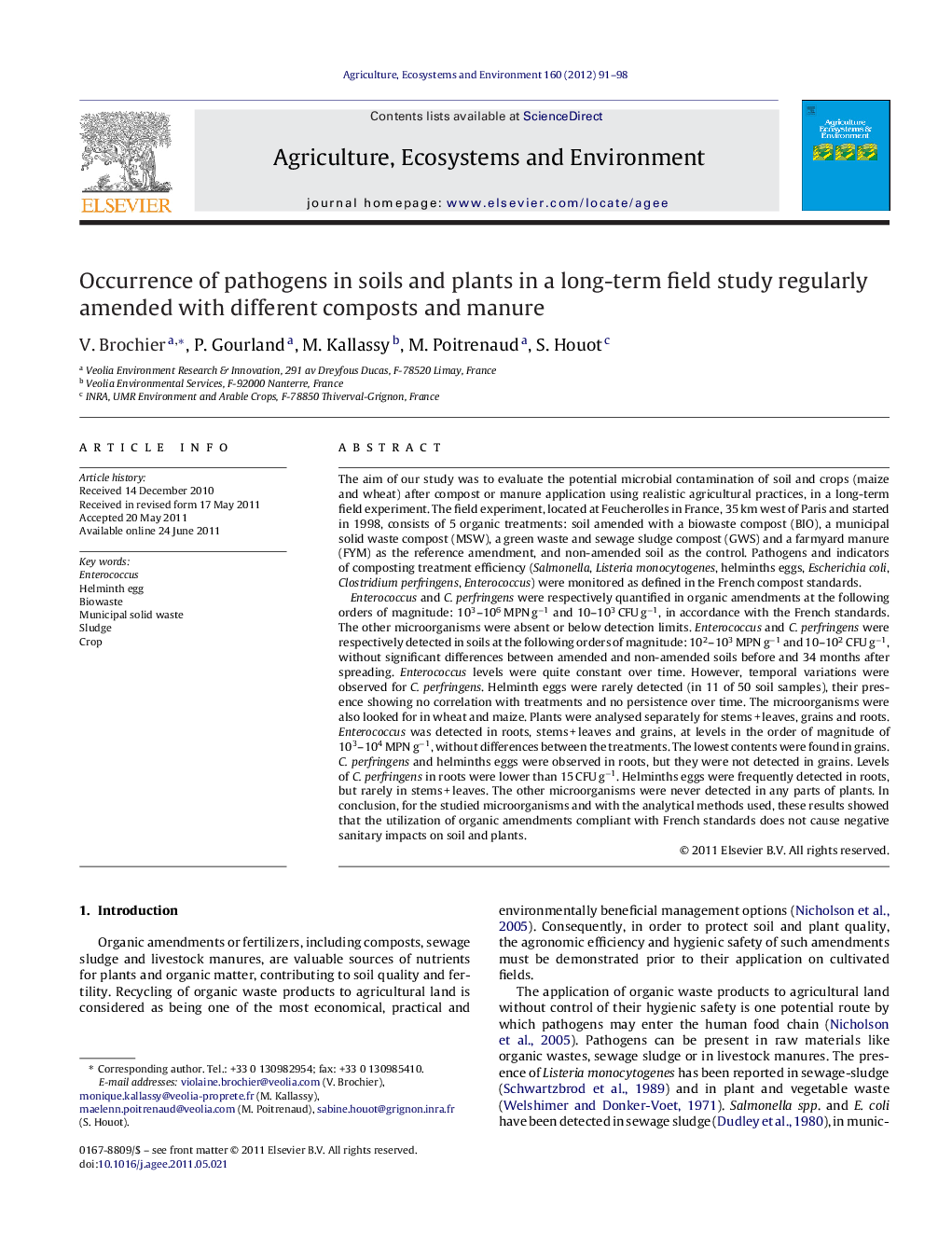| کد مقاله | کد نشریه | سال انتشار | مقاله انگلیسی | نسخه تمام متن |
|---|---|---|---|---|
| 2414320 | 1552092 | 2012 | 8 صفحه PDF | دانلود رایگان |

The aim of our study was to evaluate the potential microbial contamination of soil and crops (maize and wheat) after compost or manure application using realistic agricultural practices, in a long-term field experiment. The field experiment, located at Feucherolles in France, 35 km west of Paris and started in 1998, consists of 5 organic treatments: soil amended with a biowaste compost (BIO), a municipal solid waste compost (MSW), a green waste and sewage sludge compost (GWS) and a farmyard manure (FYM) as the reference amendment, and non-amended soil as the control. Pathogens and indicators of composting treatment efficiency (Salmonella, Listeria monocytogenes, helminths eggs, Escherichia coli, Clostridium perfringens, Enterococcus) were monitored as defined in the French compost standards.Enterococcus and C. perfringens were respectively quantified in organic amendments at the following orders of magnitude: 103–106 MPN g−1 and 10–103 CFU g−1, in accordance with the French standards. The other microorganisms were absent or below detection limits. Enterococcus and C. perfringens were respectively detected in soils at the following orders of magnitude: 102–103 MPN g−1 and 10–102 CFU g−1, without significant differences between amended and non-amended soils before and 34 months after spreading. Enterococcus levels were quite constant over time. However, temporal variations were observed for C. perfringens. Helminth eggs were rarely detected (in 11 of 50 soil samples), their presence showing no correlation with treatments and no persistence over time. The microorganisms were also looked for in wheat and maize. Plants were analysed separately for stems + leaves, grains and roots. Enterococcus was detected in roots, stems + leaves and grains, at levels in the order of magnitude of 103–104 MPN g−1, without differences between the treatments. The lowest contents were found in grains. C. perfringens and helminths eggs were observed in roots, but they were not detected in grains. Levels of C. perfringens in roots were lower than 15 CFU g−1. Helminths eggs were frequently detected in roots, but rarely in stems + leaves. The other microorganisms were never detected in any parts of plants. In conclusion, for the studied microorganisms and with the analytical methods used, these results showed that the utilization of organic amendments compliant with French standards does not cause negative sanitary impacts on soil and plants.
► Repeated applications of composts and farmyard manure did not show any contamination of soil or crops by pathogens.
► C. perfringens, Enterococcus were detected in amendments but they did not increase in soil or plants.
► Environmental sources of microorganisms were suspected in soils or plants.
Journal: Agriculture, Ecosystems & Environment - Volume 160, 1 October 2012, Pages 91–98